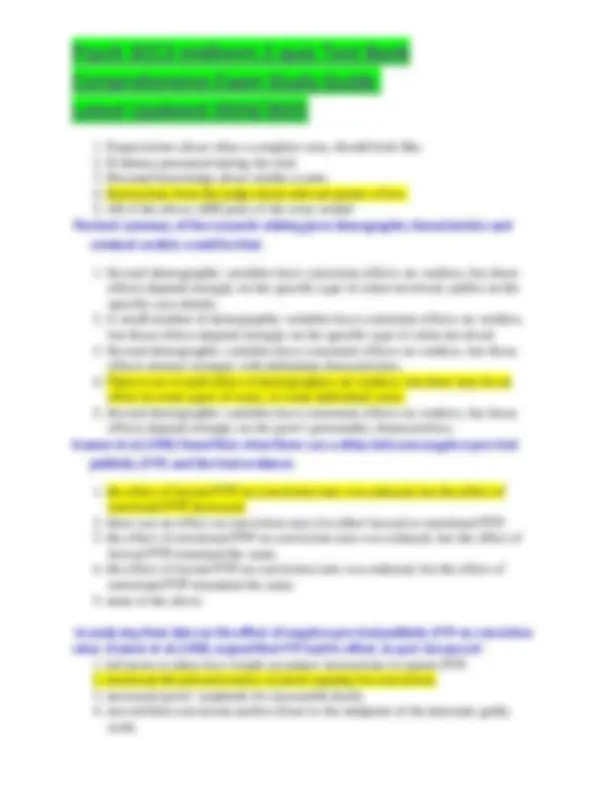







































































Study with the several resources on Docsity

Earn points by helping other students or get them with a premium plan


Prepare for your exams
Study with the several resources on Docsity

Earn points to download
Earn points by helping other students or get them with a premium plan
Community
Ask the community for help and clear up your study doubts
Discover the best universities in your country according to Docsity users
Free resources
Download our free guides on studying techniques, anxiety management strategies, and thesis advice from Docsity tutors
Various aspects of jury psychology and the factors that influence juror decision-making. It covers topics such as the stages of jury deliberations, the impact of pre-trial publicity, the role of authoritarianism, the effects of juror note-taking, and the comprehension of judicial instructions. Insights into how jurors evaluate evidence, the influence of extra-evidentiary factors, and the differences between evidence-driven and verdict-driven juries. It also discusses research on the relationship between jury verdicts and authoritarianism, as well as the effects of juror questions and simplified instructions. Overall, this document offers a comprehensive overview of the psychological processes and contextual factors that shape jury decision-making.
Typology: Exams
1 / 77

This page cannot be seen from the preview
Don't miss anything!






































































Eyewitness testimony We described a number of encoding, or storage/retrival factors that contribute to memory errors. Which of the following was NOT an encoding factor we mentioned? a. exposure duration b. arousal level c. distraction d. inferences e. all of the above are encoding errors We described the study by Wise et al (2009) that aske prosecutors and defense attorneys to evaluate the truth of statements about eyewitness testimony. The results of this study indicated that: a. defense attorneys were more accurate than prosecutors in judging the truth of statements about eyewitness testimony The value of using signal detection measures of d’ or AUC as measures of witness accuracy is that: They both assess discriminability separate from response bias A set of eigenfaces:
Which of the following statements about offender identifications from mug book pictures is NOT TRUE?
In discussing the relationships between identification accuracy and identification confidence we noted that:
age, height, gender) than about temporary characteristics (e.g., clothing).
in their judgement is already high (above 70%)
If we compare simultaneous lineup presentation with sequential presentation we find that: